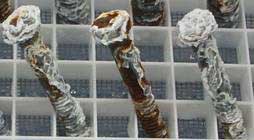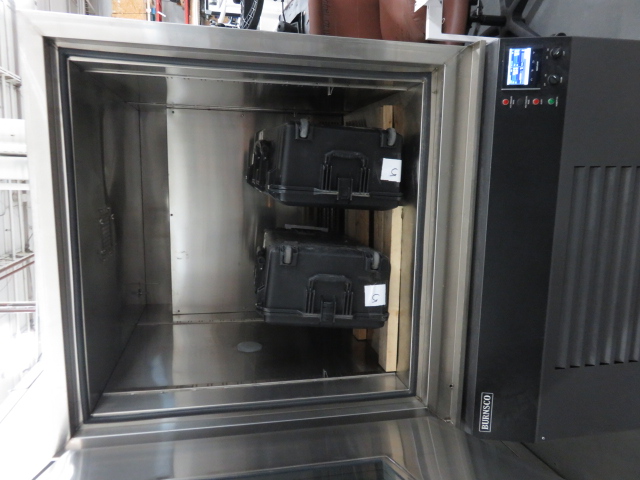Climatic Chamber Testing
Climatic chamber testing is a broad term used to describe different ways of simulating climate or excessive ambient conditions exposure for a product or a material under laboratory-controlled yet accelerated conditions. Climatic chamber testing can refer to numerous tests. For example, you can use UV testing to simulate accelerated sun exposure. In addition, climatic chamber testing can be undertaken with Salt Spray Testing where the corrosiveness of the ambient atmosphere is simulated in a controlled salt fog environment using ASTM B117 test.

Climatic Chamber Testing and
Additional Tests
In addition to climatic chamber testing, we also offer other lab services such as temperature and relative humidity cycling often referred to as Test chamber testing. Micom offers also Thermal shock testing where your product, for example, could be cycled between -78 °C and + 200 °C within 20 seconds in either direction, for thousands of cycles.
Heat aging is one of the simplest tests offered in this category. However, it is required on a regular basis in a lot of industry segments. This type of testing is based on the fact that every chemical reaction doubles its rate for every 10˚C increments. Learn more about heat aging.
We also offer additional climatic chamber testing services tailored to specific conditions such as altitude testing using ASTM D6653, vibrations testing using ASTM D4728, rain and condensing humidity test using ASTM D4585, and many other ambient stress tests.

What conditions can be tested in chambers?
Chambers are very versatile. Numerous real-world environmental conditions can be replicated inside chambers. Some of the popular conditions include:
- Exposures to either hot or cold temperatures ranging from -78 ºC to +200 ºC.
- Thermal shock testing including fast temperatures changes (within 20 seconds) from extreme hot +200 ºC to extreme cold – 78 ºC conditions
- Humidity and moisture testing. This enables a better understanding of how products behave in wet and outdoor conditions.
- Pressure and Altitude testing up to 50,000 feet. These tests enable manufacturers to test how products react in very low or very high pressures such as deep underwater or very high in the atmosphere or in space
- Corrosion (using Salt Spray Testing) can test the efficiency of various coatings in order to improve the corrosion resistance of metallic parts. Corrosion Testing is often done using the ASTM B117 test.
- UV Testing enables us to better understand how products degrade when continuously exposed to ultraviolet light coming from the sun.
- Accelerated weathering is used to test the degradation in polymer systems
Climatic Chambre Testing
Here is an example of a VTT roof being tested for fatigue at low temperatures.

Additional Test Methods
For additional test methods related to testing chambers, we invite you to learn more about Accelerated Aging, Test Chamber, Thermal Shock, Heat Aging , Coating Testing and Polymer Testing.
If you have any questions about climatic chamber testing, we invite you to contact our material testing lab today. It will be our pleasure to answer your questions and review your custom testing requirements.

